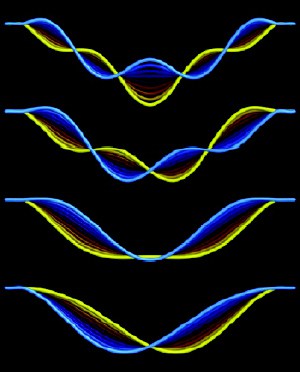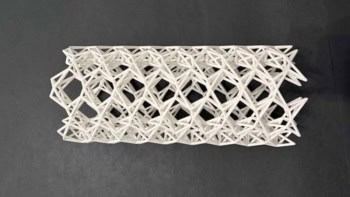Physicists at Cornell University in the US have used carbon nanotubes to make the first nanometre-sized electromechanical resonator capable of detecting extremely small forces. The device consists of a single nanotube suspended between two gold electrodes (V Sazonova et al. 2004 Nature 431 284).

Nanoelectromechanical systems or NEMS could be used for a wide variety of applications, including ultra-sensitive mass and force detection. In these devices a mechanical element moves in response to an external force, and a highly sensitive detector is used to record the displacement of the mechanical element.
Carbon nanotubes — rolled up sheets of graphite just nanometres in diameter — could be ideal candidates for making such devices because they are able to withstand large tensile stresses. This means that they could operate over a wide range of high frequencies, as is needed for quantum mechanical applications. Moreover, a nanotube can act as a transistor and is therefore capable of sensing its own displacement. This allows it to be used an electronic detector.
Paul McEuen and colleagues made their device by suspending a nanotube over a trench — typically 1.2 to 1.5 microns wide and 500 nanometres deep — between source and drain electrodes made of gold. The gate electrode lies underneath the nanotube, which itself is effectively clamped at both ends (figure 1).
The Cornell physicists adjusted the tension in the nanotube by varying the voltage at the gate electrode. This also had the effect of vibrating the nanotube. They then detected this vibrational motion by measuring the change in conductance of the nanotube as it moved through the electrical field of the gate electrode.
McEuen and co-workers showed that they could tune and measure the resonance of the nanotube over a wide range of frequencies — from 3 to 200 megahertz — by simply varying the gate voltage (figure 2). They were able to detect displacements as small as 0.5 nanometres with a force sensitivity that was within a factor of ten of the best values measured at room temperature to date.




